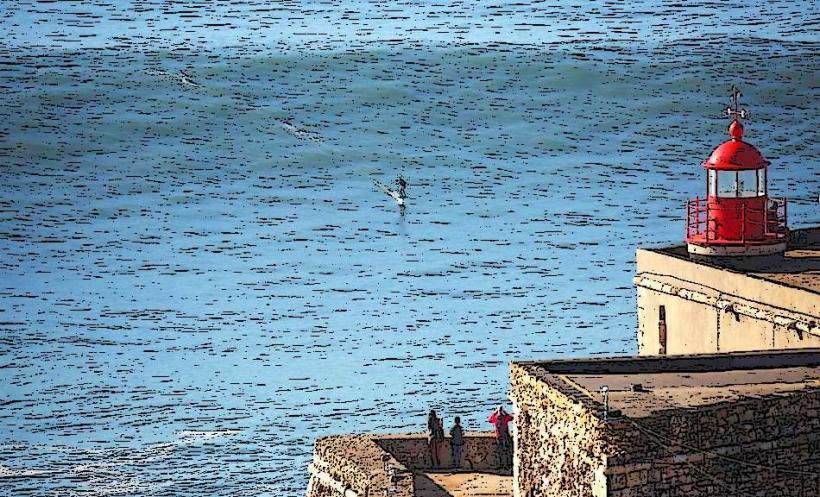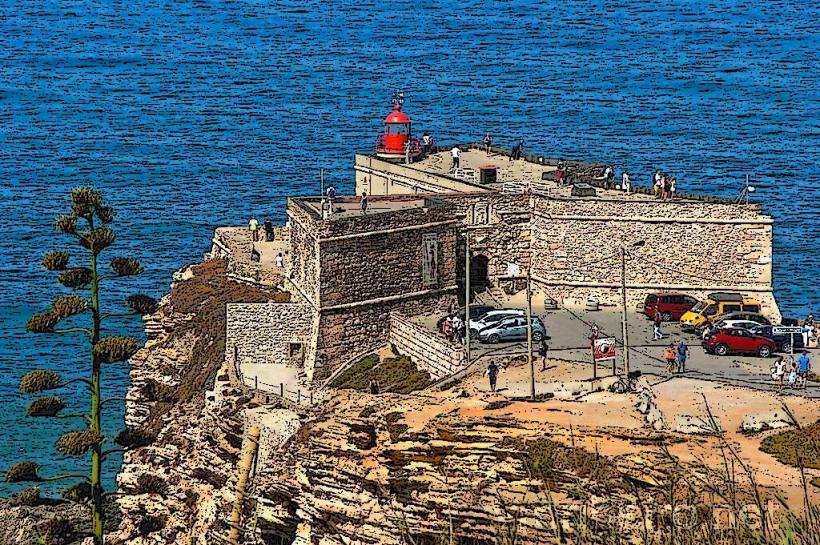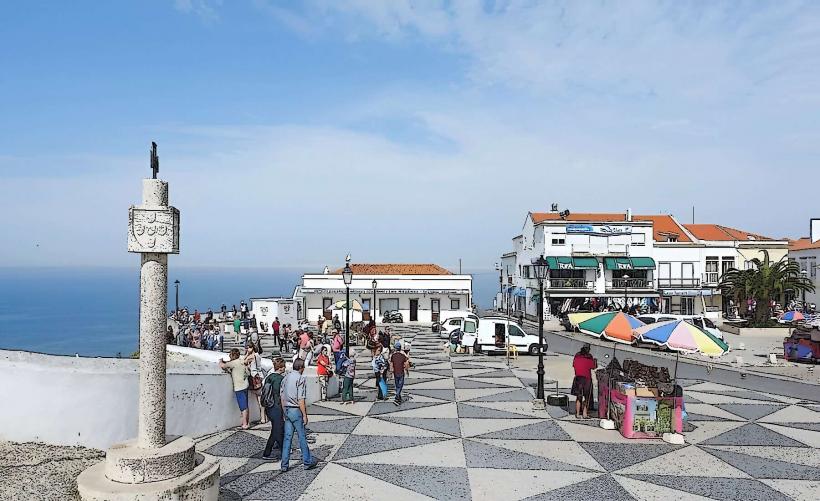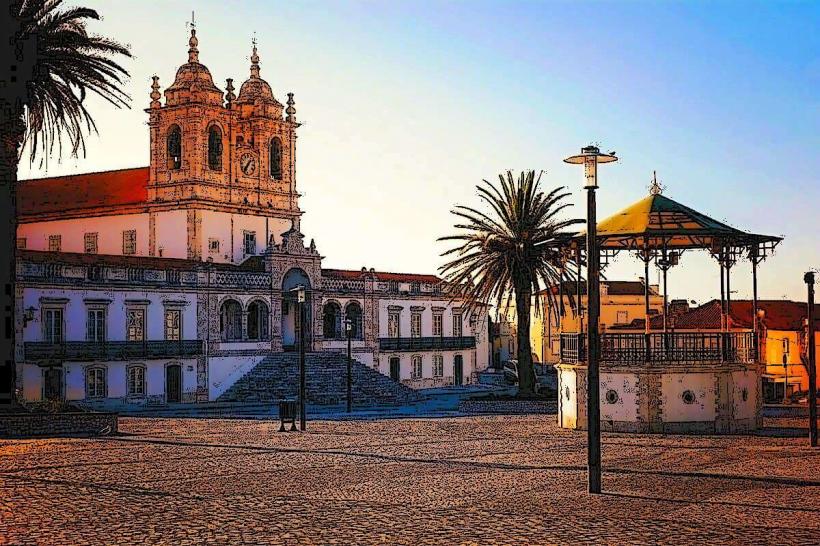Information
Landmark: Sanctuary of Our Lady of NazaréCity: Nazare
Country: Portugal
Continent: Europe
The Sanctuary of Our Lady of Nazaré (Santuário de Nossa Senhora da Nazaré) is one of the most important religious and cultural landmarks in Nazaré, Portugal. Located on the central coast, the sanctuary is dedicated to Our Lady of Nazaré, the town's patron saint, and is a place of great historical and spiritual significance. The sanctuary is a key pilgrimage site for Catholics and a symbol of the town’s rich religious traditions.
1. Historical Background
- The Sanctuary has a long history that dates back to the 12th century, when the town of Nazaré was already a fishing village. According to local legend, the shrine’s origins are linked to a miraculous event involving a statue of the Virgin Mary.
- The Legend of Our Lady of Nazaré: The most famous legend associated with the sanctuary involves a 12th-century hermit named Nazarius, who lived in the area. According to the story, he received a vision of the Virgin Mary, who instructed him to build a chapel in her honor. Later, the statue of Our Lady of Nazaré was said to have been brought to the site by King D. Fernando I after a miraculous event in which a boat carrying the statue was guided by divine intervention through a violent storm.
- The legend of the statue’s miraculous power, which is believed to have protected sailors and fishermen from harm, has made the sanctuary an important place of worship for both locals and visitors. The statue of Our Lady of Nazaré is central to the shrine’s identity and is believed to have been in the region for more than 700 years.
2. Architecture and Layout
The sanctuary complex consists of several key buildings, each with its own architectural and historical importance:
The Sanctuary Church: The main church of the sanctuary is dedicated to Our Lady of Nazaré. The church features a blend of Gothic, Manueline, and Baroque architectural styles, reflecting the long history and various phases of construction and renovation.
- The church’s most significant feature is the Chapel of Our Lady of Nazaré, where the revered statue of the Virgin Mary is housed. The chapel is adorned with rich decorations, including intricate gold leaf, wood carvings, and paintings. It is a place where visitors can pray and reflect on the miraculous history of the statue.
- The church also features Baroque altars and other works of art, and it is a tranquil place of worship, often filled with the sounds of prayer and devotion.
Chapel of the Apparitions: Another key feature of the sanctuary is the Chapel of the Apparitions, built to commemorate the legend of the apparition of Our Lady to the hermit Nazarius. This chapel is a smaller structure, but it is an important site for pilgrims, who visit to reflect on the story of the Virgin Mary's divine intervention.
The Bell Tower: The bell tower is another prominent part of the sanctuary, with its distinctive design and views over the town and coastline. The tower houses several bells that call the faithful to prayer and mark important moments in the liturgical calendar.
The Monastery: Adjacent to the church is the Monastery of Our Lady of Nazaré, a Franciscan monastery. The monastery complex houses religious order members who help maintain the sanctuary and lead spiritual activities and services. It also has spaces dedicated to pilgrims and visitors who wish to stay near the sanctuary.
3. The Statue of Our Lady of Nazaré
The statue of Our Lady of Nazaré is the central object of devotion in the sanctuary. The statue is a black Madonna, depicting the Virgin Mary holding the infant Jesus. This representation of Our Lady is notable for its dark complexion, which is believed to symbolize the statue’s divine protection over the people of Nazaré, particularly fishermen and sailors.
- Miracles and Significance: Over the centuries, the statue has been associated with numerous miracles, particularly the protection it provided to sailors who were at sea. It is said that many people who were saved from storms at sea attributed their survival to the intercession of Our Lady of Nazaré.
- Procession and Pilgrimages: The statue is carried in procession during religious festivals and is the focal point of the town’s major celebrations. Every year, thousands of pilgrims visit Nazaré to seek the Virgin’s protection and blessings.
4. The Religious Festivals
The Sanctuary of Our Lady of Nazaré plays a central role in the religious and cultural life of the town, especially during key festivals:
- Feast of Our Lady of Nazaré (September 8th): The most significant celebration at the sanctuary is the Feast of Our Lady of Nazaré, which takes place every year on September 8th. This feast honors the Virgin Mary and attracts thousands of pilgrims and visitors. The festivities include processions, masses, cultural performances, and festivals.
- Holy Week: During Holy Week, the sanctuary is also a place of intense religious observance, with special services and processions held throughout the week, culminating in the celebration of Easter.
- Devotional Services: The sanctuary holds regular religious services, including daily masses, and it remains a spiritual center for those seeking peace and reflection.
5. Visitor Experience
- Pilgrimages: Many visitors come to the Sanctuary of Our Lady of Nazaré to participate in pilgrimages and to pray for the intercession of the Virgin Mary. The peaceful atmosphere of the sanctuary offers a place for personal reflection, spiritual renewal, and quiet devotion.
- Panoramic Views: From the sanctuary’s position atop a hill in the Sítio area, visitors can enjoy stunning panoramic views of the town of Nazaré, the coastline, and the Atlantic Ocean. The sight of the waves crashing below, especially during the winter months when giant waves are common, adds to the mystique and beauty of the location.
- Museum and Exhibitions: The sanctuary complex also features a museum that showcases the history of the sanctuary, the town, and the cultural significance of Our Lady of Nazaré. It includes religious art, historical artifacts, and explanations of the sanctuary’s role in local life.
6. Conclusion
The Sanctuary of Our Lady of Nazaré is not just a religious site; it is a place deeply embedded in the culture and history of Nazaré. The sanctuary’s stunning architecture, rich history, and the revered statue of Our Lady of Nazaré make it a significant spiritual and cultural landmark in Portugal. For visitors, it offers a place of worship, reflection, and a chance to experience one of Portugal’s most cherished religious traditions. Whether for pilgrims, surfers, or tourists, the sanctuary is a symbol of hope, faith, and the power of divine protection.







